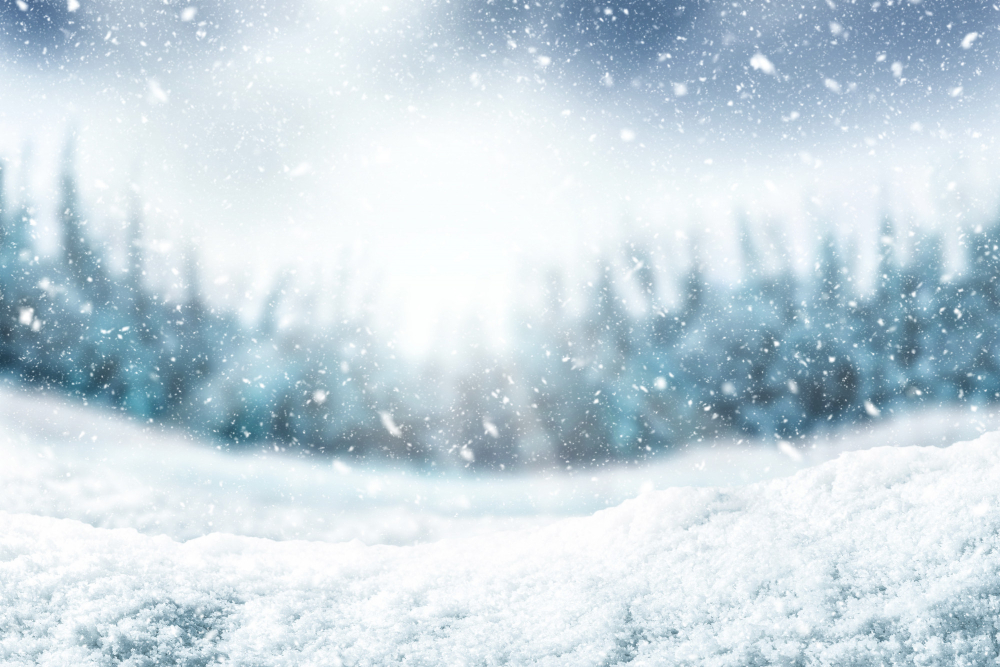
The Ice Age
To this day, the cause of the Ice Age is one of the greatest puzzles for modern scientists, the mystery is second only to what caused the extinction of dinosaurs. Scientists hold a wide variety of theories as to what happened, but there can be no consensus because each theory carries some contradictions to the actual story being told by the ice sheets that are left over today. There is, however, one event that can offer an uncontradictory explanation of the cause of the ice age: the worldwide flood. The information from God in the bible concerning the great flood in Noah’s time fits the cause of the ice age, and the geological record attests to this.
If you simply lower the temperature in a given place, you can get an ice age there, right? No, it is impossible to have an ice age by cooler temperatures alone. You must have low temperatures accompanied by colossal amounts of water vapor in order to produce enormous levels of snow. The earth that we know today is just not capable of producing anything like the ice age that Earth’s northern hemisphere experienced 4,500 years ago. It was at that time, after the universal flood, that conditions were right to produce cool, wet summers, followed by brutally extreme winter storms. It is estimated that these conditions lasted for around 400 to 700 years in the post-flood world, decreasing in intensity through the years. But how does the flood explain the ice age?
According to the Book of Genesis, at the start of the flood, “all the fountains of the great deep were broken up, and the windows of heaven were opened” (Genesis 7:11). All fountains of the great deep were “broken up” (Hebrew – baqa: to split, rip open, tear, break through). The evidence that the deep was ripped open can still be seen today under the oceans. This breaking up was not only a water event but a hot magma event. Magma from below the earth made contact with the seawater, Today, the cooled magma exists as igneous rocky mountain ranges that snake through the ocean floor spanning 40,000 miles long (for reference, the circumference of the earth is less than 25,000 miles). What’s more, is that some areas of this undersea mountain range reaches heights greater than Mount Everest. This was an enormous and worldwide judgment of God.
As the magma was cooled by the seas, the seas were heated by the magma. So, when the floodwaters subsided, the oceans would have been warmer than they are today (maybe around 10 degrees). So, the evaporation of water from the oceans was much faster and much higher in volume. The clouds of water then drifted over the colder continents and fell as snow and ice. Why were the continents colder than they are today? The great volcanic activity during the flood would infer that volcanic aerosols remained in the air after the flood. Scientists know from recent volcanic activity that these aerosols (not volcanic dust) remain in the atmosphere for 2-10 years. However, the volcanic activity likely did not cease immediately after the flood but continued to be active for many years until eventually subsiding over time. These aerosols reflected some of the sunlight back into space. Without the full strength of the sun’s rays, the Earth could not fully benefit from its warmth. This kept land masses cooler. This did not so much affect the warm oceans because of waters greater capacity for holding warmth. With greater evaporation from the oceans and cooler temperatures over land, for many years post-flood, there would have been significantly greater snowfall. We know from more recent history that a large volcanic disruption will alter the climate, and cooling temperatures for several years (the length varies depending on the size of the event). So, what about the greatest and most widespread volcanic event in history? What would it do to the climate? The amount of magma in the rock record suggests that the volcanos of the past were incomparable to more recent eruptions.
The Ice Age is often mistaken as a fridged world covered entirely by snow and ice. 10% of earth’s continents are currently covered with ice. During the Ice Age, 30% of the continents were covered with ice. Some of the areas impacted by the Ice Age were Alaska, Canada, Northern U.S., Europe, Russia, and Australia. These regions were hit with heavy snowstorms that did not melt much during summer, only to be hit again with more snowfall each winter for a few hundred years.
Another thing to consider concerning the speed by which the layers of ice formed is that over the icy land masses, there is only one till sheet. A till sheet is a layer of particles like sand and dust. A till layer would tell the story that a period of time has transpired between the layers of ice. For some time, evolutionists assumed that there must be many till layers because they believed that ice ages happen every 10,000 years. But the record in the ice has proven that there is only one till sheet of debris. The ice record is telling a different story, that there was only one ice age, and that the snowstorms (each bringing another layer to build up the glaciated terrain) occurred over a much shorter period of time. The ice record suggests that these layers formed multiple times every year in the winter season, not allowing enough time for the buildup of debris (such as would be the case if there were 10,000 years between each layer of ice).
Wooly Mammoths are most famously associated with the ice age, but they really don’t have anything to do with the ice age, but with the aftermath. Likely about 400-700 years after the flood, the icy terrain of the northern hemisphere began to melt, and the freshwater runoff went into the ocean where it refroze over the salty abyss. Good vegetation began to grow on the newly revealed land mass and millions of animals, including the Mammoths, began to populate these areas. So why did they die? Great variances in air temperature between high and low altitudes caused violent windstorms, stirring up a great amount of dust and sand into the air. This is evident by the way these animals are entombed. These plants and animals are found in Permafrost, which is frozen dust, sand, and other sediments. The remains of Wooly Mammoths are found in the hillsides of frozen sand. Most of them likely died of asphyxiation from terrible sandstorms and dustbowls that occurred after the ice age.
Article by Tanner Campbell
